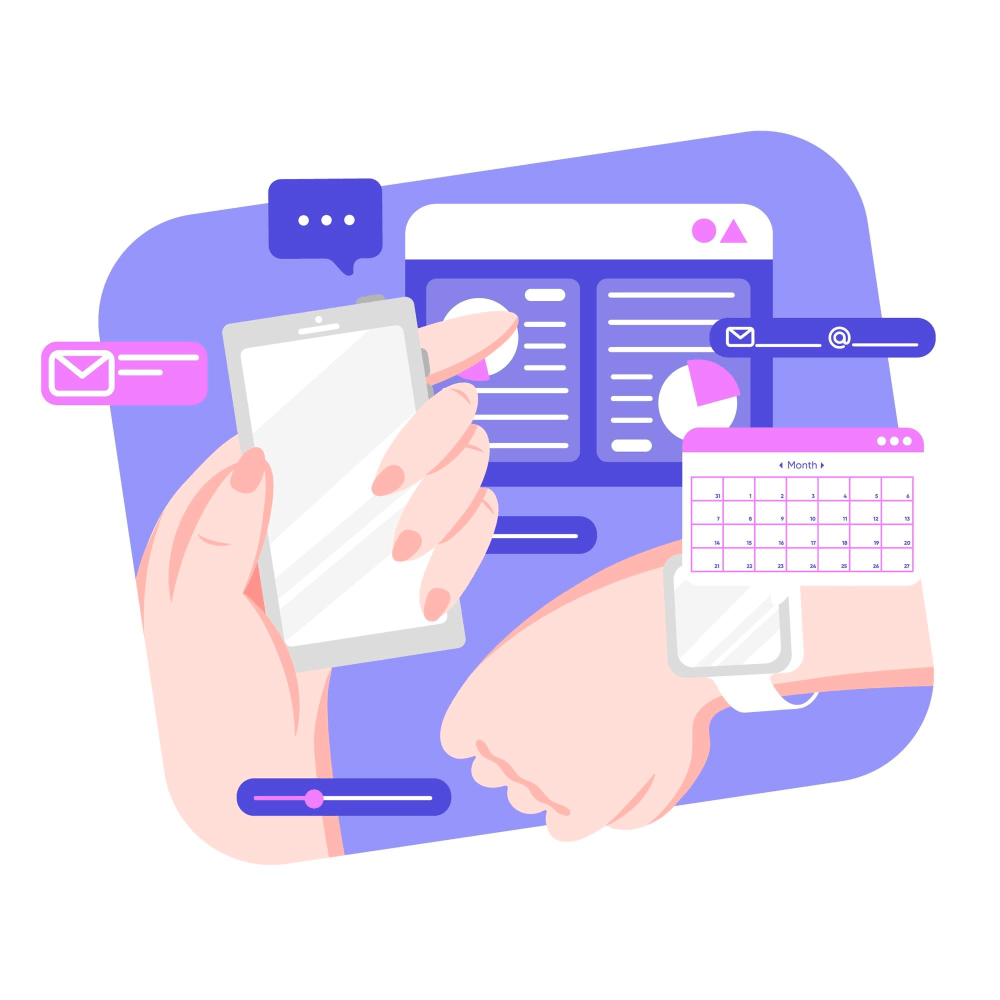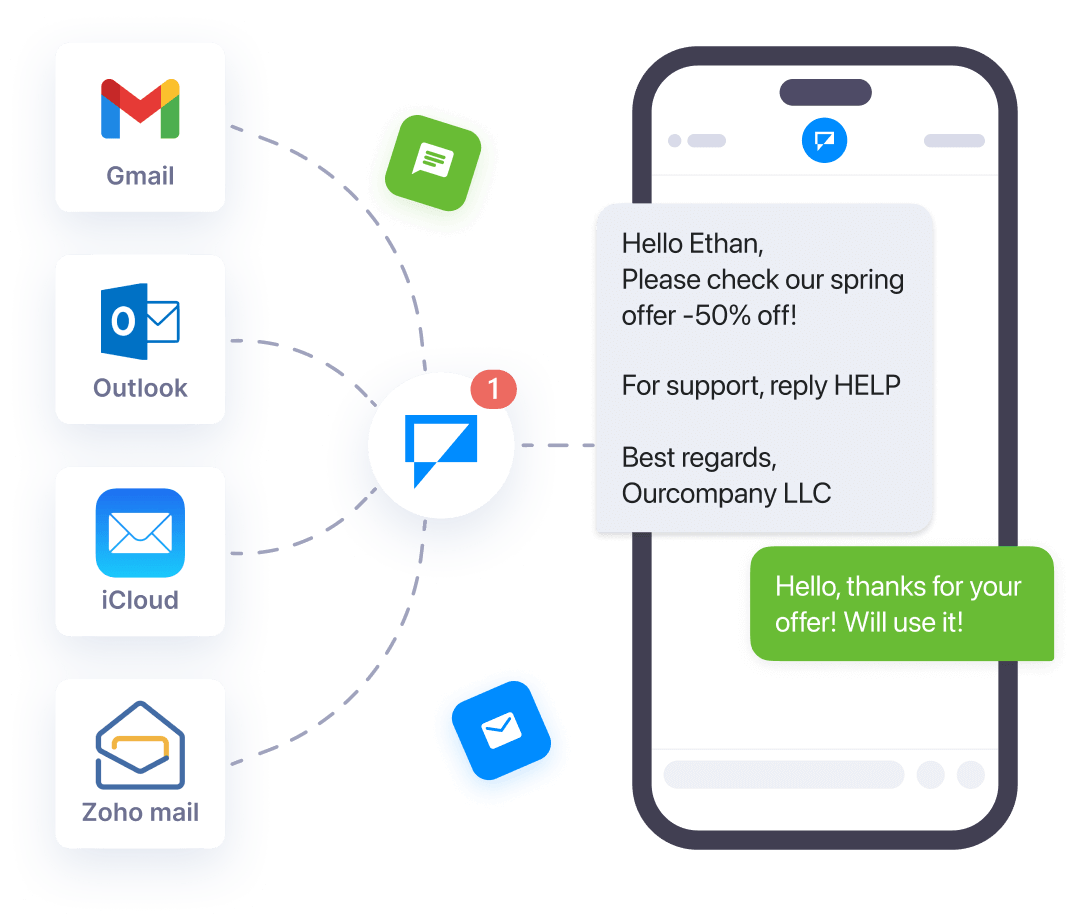Table of Contents
SMS marketing automation isn’t just about sending texts. It’s about sending the right message, at the right time, to the right person—automatically.
In 2025, brands are utilizing SMS automation to onboard customers, drive engagement, and increase conversions without requiring constant manual input. But how does this process work behind the scenes?
From customer onboarding to dynamic message creation, SMS automation is powered by data, triggers, and intelligent workflows. Below, we break it down step by step.
What is SMS Marketing Automation?
SMS Marketing Automation is the process of using software tools to send text messages to customers automatically based on specific triggers, behaviors, or time schedules. Instead of sending every message manually, businesses can create pre-defined workflows that deliver the right message to the right person at the right time—without ongoing human input.
These automated messages can include anything from welcome texts after a customer signs up, to cart abandonment reminders, birthday greetings, or shipping updates. Automation ensures that communication is timely, relevant, and personalized, all while saving time and effort for marketers.
Key Components of SMS Marketing Automation
To understand how SMS marketing automation works, it’s important to know the key elements that make it function smoothly. These components work together to create a system that sends the right message to the right person at the right time.
1. Triggers
Triggers are actions or events that automatically start an SMS message. For example, a trigger could be a new customer signing up, someone abandoning their cart, or a user’s birthday. Once the trigger occurs, the system sends out a pre-set message related to that event.
2. Workflows
A workflow is a sequence of actions that follow a trigger. For instance, if a customer abandons their cart, the workflow might send a reminder message an hour later, then a discount offer a day after that. Workflows help guide customers through a journey with minimal manual effort.
3. Scheduling
Automation allows you to schedule messages in advance. This means you can plan campaigns around holidays, events, or product launches, and ensure they go out exactly when needed—whether that’s instantly, daily, weekly, or at a custom time.
4. Segmentation
Segmentation divides your audience into groups based on behavior, preferences, or demographics. For example, you might segment customers based on purchase history or location. Automation tools use these segments to send more targeted and relevant messages.
5. Personalization
Personalization means using customer data (like names, birthdays, or past purchases) to tailor messages. Automated SMS platforms pull this data into each message, helping your texts feel more personal and less generic.
Step 1: Customer Onboarding for SMS Marketing
It all starts with permission. Before sending marketing texts, you need the customer to opt in. That means capturing their phone number and gaining consent.
You can do this through various channels:
- A signup form on your website
- A checkbox during online checkout
- A text-to-join campaign using keywords
Whichever method you choose, you must comply with regulations like the TCPA and GDPR. Customers must clearly know they’re agreeing to receive promotional messages.
Once consent is obtained, the contact is added to your SMS list. From there, they become eligible to receive automated text campaigns based on their behavior and profile.
This stage is critical. It sets the foundation for a permission-based, trust-driven communication strategy.

Step 2: Trigger-Based Automation Begins
Once a customer joins your list, the magic begins. But nothing moves until a trigger is activated.
Triggers are specific events or customer actions that launch an automated workflow. These can include:
- First-time sign-up
- Adding an item to the shopping cart
- Completing a purchase
- Missing a scheduled appointment
- Inactivity for a set number of days
For example, a new subscriber could immediately receive a welcome message like:
“Welcome to Luna Apparel! You’ve unlocked 15% off your first order. Tap here to shop: [link]”
If a customer abandons a cart, a follow-up message might read:
“Still thinking it over? Your items are waiting—and you’ve got 10% off for the next 2 hours.”
Trigger-based automation ensures timely and relevant communication. Instead of manually chasing leads or writing repetitive reminders, the system takes care of it, right when it matters most.
Step 3: CRM Integration and System APIs
To power more intelligent automation, your SMS platform needs data. This is where CRM integration and API access come into play.
When your SMS platform connects to tools like Shopify, Salesforce, HubSpot, or custom software, you gain visibility into customer actions and preferences. You can:
- Track past purchases
- Access lifecycle stages
- Segment by engagement level
- Tailor follow-ups based on real-time behavior
For instance, when a customer’s loyalty points hit a certain threshold, your CRM can trigger an SMS with a personalized discount code.
APIs (Application Programming Interfaces) enable these real-time interactions. They encourage different systems to share data instantly, enabling smooth automation that operates behind the scenes.
This seamless connection ensures that your SMS campaigns are not only fast but also smart and context-aware.
Step 4: Personalized Messaging at Scale
Once your triggers and integrations are live, personalization kicks in. This is where SMS automation delivers real power.
Using customer data from your CRM and prior engagement, you can personalize every message with:
- First name or customer ID
- Purchase history
- Timing based on last activity
- Personalized links or offers
Here’s an example:
“Hi Rachel! We noticed you loved our skincare line. Want to try our new serum for 20% off? Click here to learn more.”
You can also segment customers into different journeys:
- Loyal buyers get early access to offers
- Inactives receive re-engagement texts
- New sign-ups are nurtured with welcome flows
The result is automated messaging that feels personal and timely, leading to higher click-through rates, more conversions, and stronger brand loyalty.

Final Thoughts
SMS marketing automation is no longer a nice-to-have—it’s a growth engine. It saves time, increases accuracy, and delivers targeted communication without the manual lift.
Let’s recap the key steps:
- Customer Onboarding – Secure consent and add users to your SMS system.
- Trigger-Based Automation – Use specific actions to launch relevant texts.
- CRM + API Integration – Feed in real-time data to guide messaging.
- Message Personalization – Craft messages that resonate on an individual level.
When you combine these four layers, you create a marketing machine that operates efficiently and delivers tangible value. In 2025, brands that leverage automation will communicate more efficiently, foster stronger relationships, and convert a higher percentage of leads.
It’s time to work smarter, not harder. Start building your automated SMS system today.






